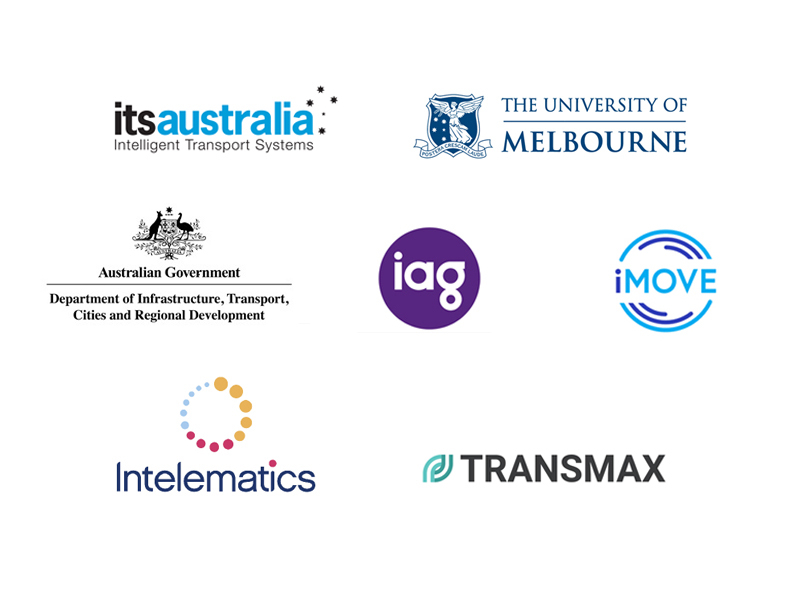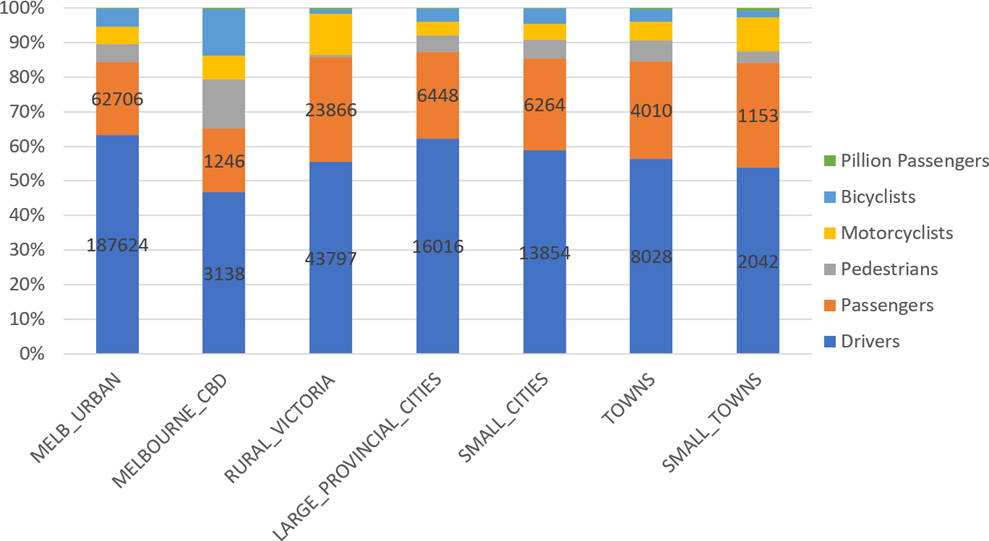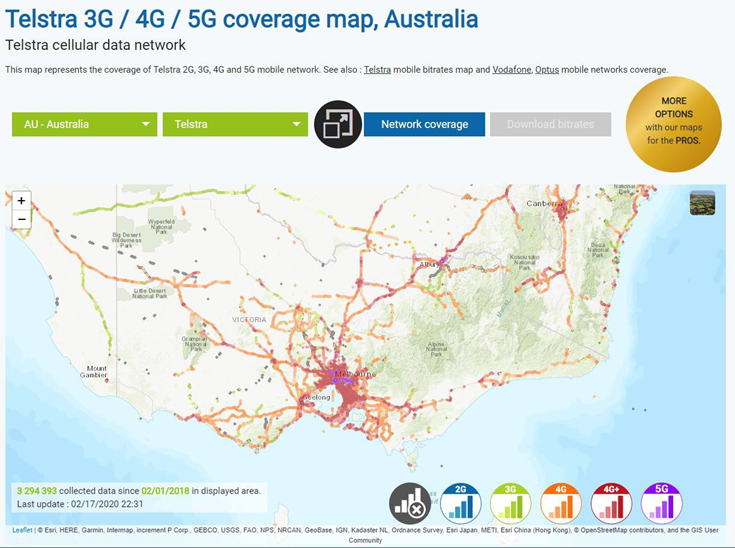Connectivity in C-ITS
Investigating pathways to accelerate the uptake of road safety and efficiency technologies
An ITS Australia project, in collaboration with the University of Melbourne, the Australian Government Department of Infrastructure, Transport, Cities, and Regional Development (DITCRD), IAG, Intelematics, Transmax, and iMOVE Australia
Project details
This project was conducted over 6 months and involved a detailed literature review and series of stakeholder interviews and expert workshops.
Increasing the uptake of road safety technology was a key recommendation of the 2018 National Road Safety Strategy Inquiry report, with joint commitment to support the recommendation through the Road Safety Working Group’s Implementation Plan.
There is a strong commitment across all levels of government to improve safety outcomes on our roads. Governments are progressing standards to support the deployment of technology such as Autonomous Emergency Braking, along with broad improvements in crash protection.
The Cooperative Intelligent Transport Systems (C‐ITS) combine information technology and mobile communication to enable data and command transmissions between vehicles, roadside infrastructure and a central management systems, in order to improve roadway safety for all users, as well as traffic flow efficiency in the network.
Cooperative Intelligent Transport Systems (C-ITS) combine information technology and mobile communication to enable data and command transmissions between vehicles, roadside infrastructure and a central management systems, in order to improve roadway safety for all users, as well as traffic flow efficiency in the network.
The recent technological advancements in vehicle-to-vehicle and vehicle-to-infrastructure communications (vehicle connectivity, in general), wireless sensors, video analytics, artificial intelligence, edge computing and IoT can support and accelerate cooperative transport systems for Australian cities. However, the potential safety and efficiency benefits from connected vehicles are unlikely to be realised in the immediate future in Australia due to the age of our fleet and the limited connectivity of new vehicles.
Increasing the uptake of road safety technology was a key recommendation of the 2018 National Road Safety Strategy Inquiry report, with joint commitment to support the recommendation through the Road Safety Working Group’s Implementation Plan.
There is a strong commitment across all levels of government to improve safety outcomes on our roads. Governments are progressing standards to support the deployment of technology such as Autonomous Emergency Braking, along with broad improvements in crash protection.
There is a potential to increase the number of compatible connected vehicles within the Australian fleet over the next decade through the fitting of after-market devices and/or increasing the demand of consumers for connectivity to be enabled in new vehicles arriving in Australia. An increase in connected vehicles is likely to lead to improved road safety outcomes for the community.
ANCAP Safety modelling on road death projection estimated that with an increasing population and no changes to current road death rates over the next five years, around 6,000 lives will be lost on Australia’s roads.
AAA research found that in 2018–19, congestion costs are expected to exceed $23 billion, which will be more than the value of all road-related expenditure. Without major policy changes, congestion costs are projected to reach between $30.6 and $41.2 billion by 2030.[1].
Safety and congestion are two of the key challenges on our networks and there is strong potential for connectivity and C-ITS to improve these vital problems.
In August 2019 the Transport Infrastructure Council (TIC) endorsed the Land Transport Technology Action Plan 2020-2023 that underpins the National Policy Framework for Land Transport Technology, focusing on the five themes of:
- Safety, Security and Privacy;
- Digital and Physical Infrastructure;
- Data;
- Standards and Interoperability; and
- Disruption and Change.
A new action identified in the Plan is 1.4 – ‘Accelerate and incentivise the uptake of road safety technologies and innovation’.
Connected vehicles can increase safety and network efficiency outcomes. In urban environments increased connectivity of vehicles could enable improved network productivity[2] and offer safety benefits for all road users. In rural and regional contexts, safety and productivity improvements result in social equity and accessibility benefits.
There is a mix of technology and levels of connectivity required and range of use cases to consider for optimal outcomes. An evidence base is needed to better understand the options that can offer the most effective safety and efficiency benefits on Australia roads.
There is a potential to increase the number of compatible connected vehicles within the Australian over the next decade through the fitting of after-market devices and/or increasing the demand of consumers for connectivity to be enabled in new vehicles arriving in Australia. An increase in connected vehicles is likely to lead to improved road safety outcomes for the community.
Project Stages:
- Literature review – national and international analysis of existing research, journal publications, and papers to assess approaches, challenges and opportunities
- Data collection and analysis to model potential pathways
- Assess customer (driver) segments and jurisdiction types (urban / regional) to estimate maximum benefits against minimal expenditure (financial and resources)
- Decision gateway to investigate potential use-cases in sample jurisdictions
Literature Review / Desktop Research:
- National existing research, journal publications, and papers to assess approaches
- International existing research, journal publications, and papers to assess approaches
- Key stakeholder interviews
- Assessment of penetration rates projection from now across pre-determined timeframe
- Technology analysis and benchmarking including devices as well as communications protocols and mix of uses
- Use-cases analysis testing for maximum benefit – safety and network productivity
- Urban
- Regional / Rural
- Corridor
- A report detailing the analysis of the literature review and desktop study of the applications and penetration of levels of connectivity and opportunities for connected and C-ITS enabled vehicles to enable positive impacts in safety and network productivity. Including potential use cases considered based on data analysis, literature review, and stakeholder interviews.
[1] https://www.aaa.asn.au/wp-content/uploads/2019/06/Road-Congestion-In-Australia-2019-v.3.pdf
[2] Talebpour, A. and Mahmassani, H.S., 2016. Influence of connected and autonomous vehicles on traffic flow stability and throughput. Transportation Research Part C: Emerging Technologies, 71, pp.143-163.
Co-operative intelligent transport systems (C-ITS) involve emerging technologies for vehicle connectivity and communications with other vehicles (V2V), infrastructure (V2I), and everything (V2X). These communications, will enable connected and automated vehicles (CAVs) to potentially deliver a range of benefits, including increased road safety and traffic network performance. C-ITS technologies offer short-range and long-range communications, where the scenario or nature of application governs the type of communication employed. Two C-ITS communication technologies are discussed: Cellular Vehicle-to-Everything (C-V2X) and Dedicated Short Range Communication (DSRC). This review will consider the potential for implementing DSRC as a short-range communication method, C-V2X for both short- and long-range communications, and a hybrid method consisting of DSRC for short-range with a cellular long-range communication capability. These implementation methods are based on the approaches to testing and simulating C-ITS communication observed in the USA (where DSRC is being heavily investigated) and Europe (where the hybrid model is being considered).
There are numerous use cases for connected vehicles which have been trialled and simulated by government endorsed agencies, industry, and in academia. These trials aim to test and demonstrate the safety, environmental, and mobility benefits which CVs can provide. The expected safety benefits of C-ITS communication technology are divided into two categories: awareness messages and warning messages. Awareness messages are defined as non-critical communications which act to provide an increased knowledge of the driver’s surrounding infrastructure and environment. These include advisory warnings for speed, red light signals ahead, or other hazards. Warning messages, on the other hand, are considered critical, where the driver is warned of an imminent threat where reactions to such messages are time sensitive. These include warnings about potential collision paths with another vehicle or a vulnerable road user. Other benefits from connected vehicles including mobility and environmental benefits are also investigated for their ability to provide reduced fuel consumption, and travel-time savings.
The deployment of connectivity technology requires several decisions to be made, including the type of technology chosen and the method of deployment in vehicles. These decisions are considered based on the framework presented in the European Roadmap to Deployment. Other challenges and opportunities in the deployment of C-ITS technology include performance requirements, penetration rates required for benefits to be realised, network coverage requirements, interference and congestion issues, human machine interaction factors, and security, privacy, and user acceptance.
This literature review undertaken by the University of Melbourne with ITS Australia and reviewed by project participants and other key stakeholders highlights existing pilots and deployments of ITS and C-ITS technologies and reviews a range of use cases and potential applications to improve safety and efficiency outcomes.
- University of Melbourne
- ITS Australia
- Department of Infrastructure, Transport, Cities, and Regional Development (DITCRD)
- IAG
- Intelematics
- Transmax
- iMOVE Australia



